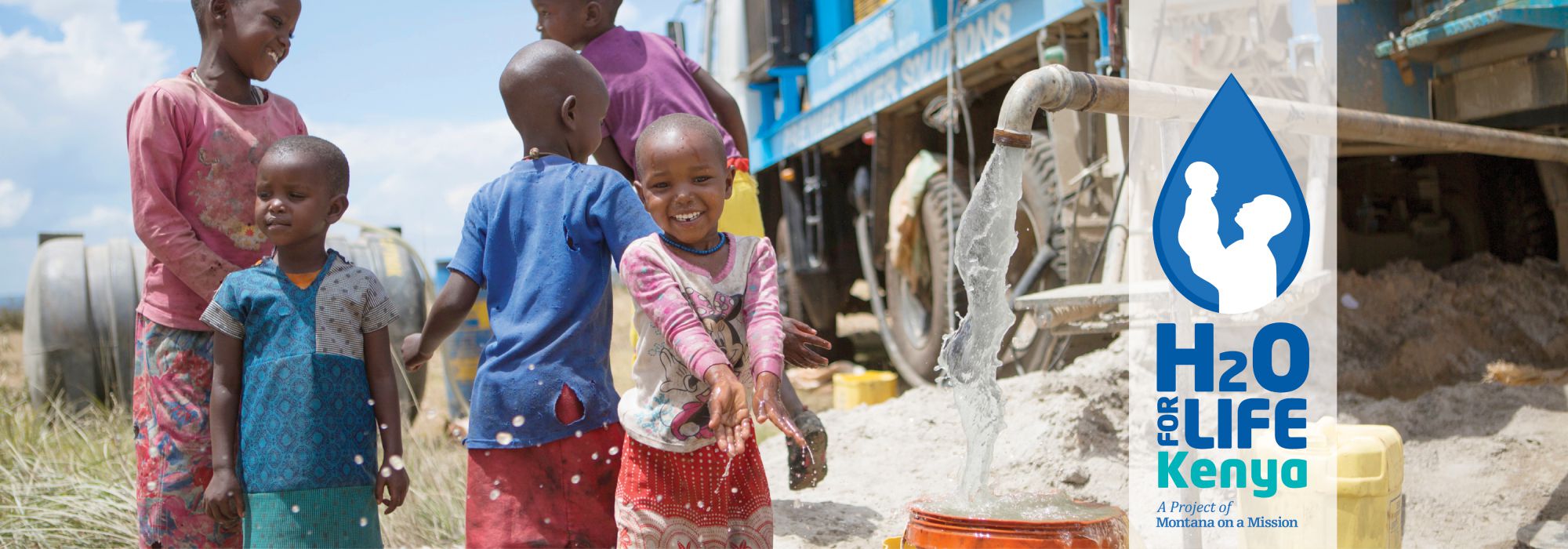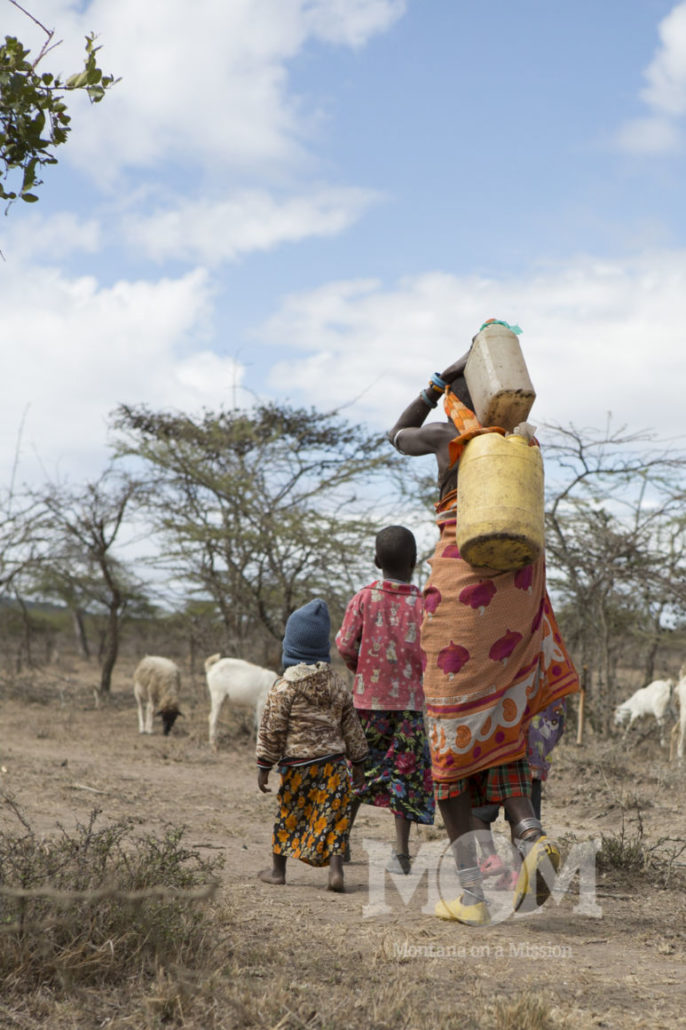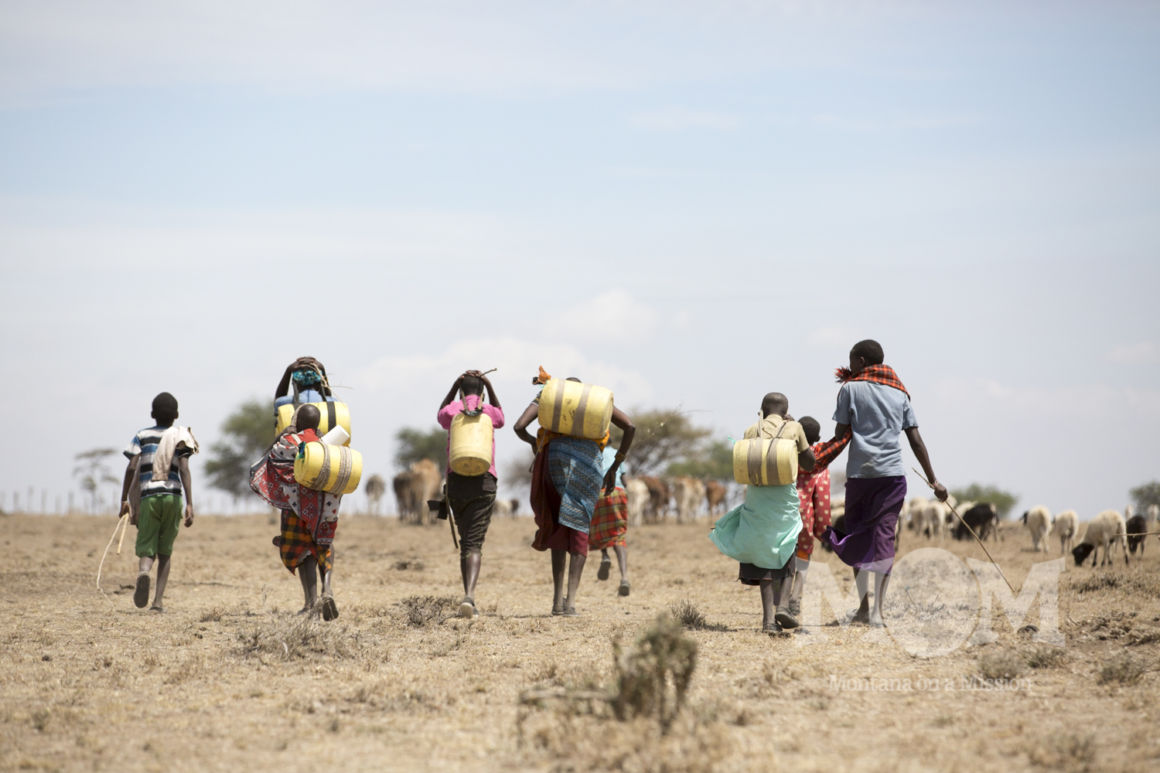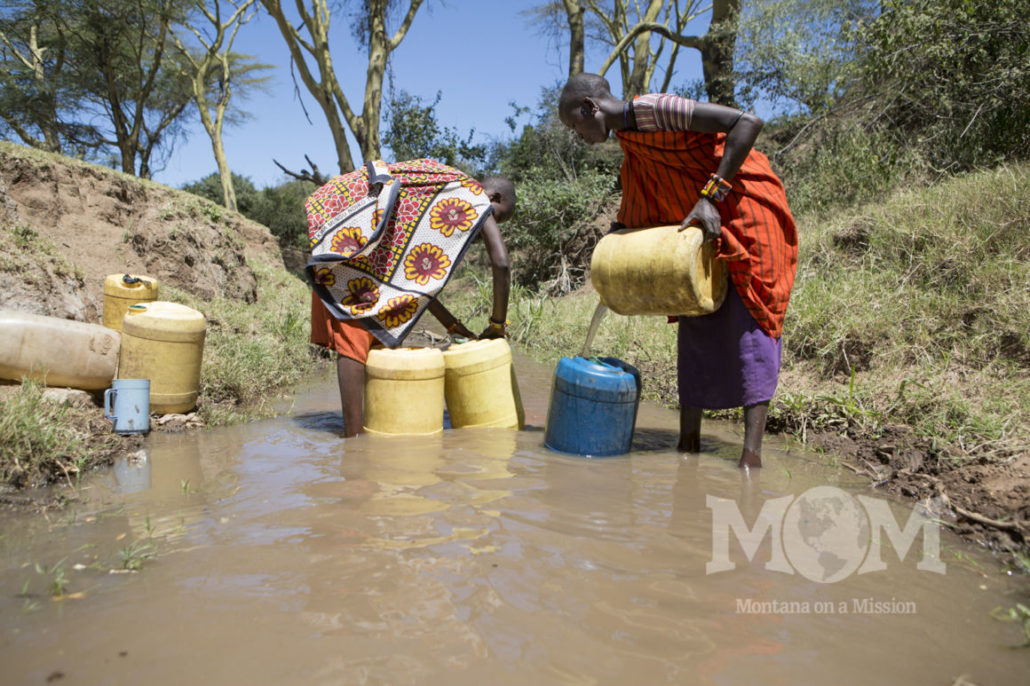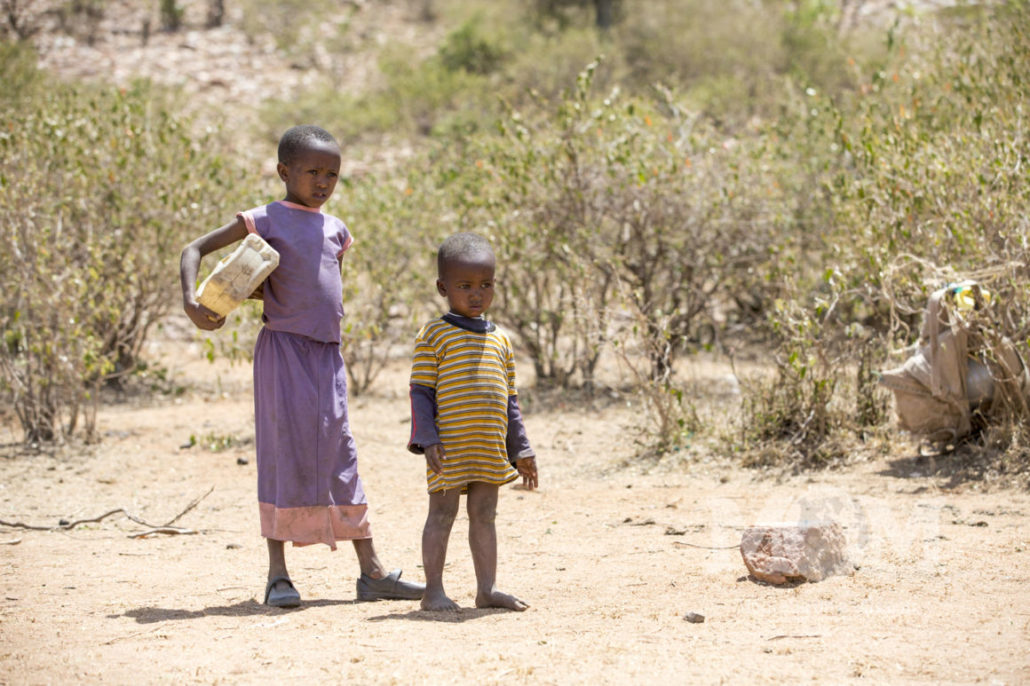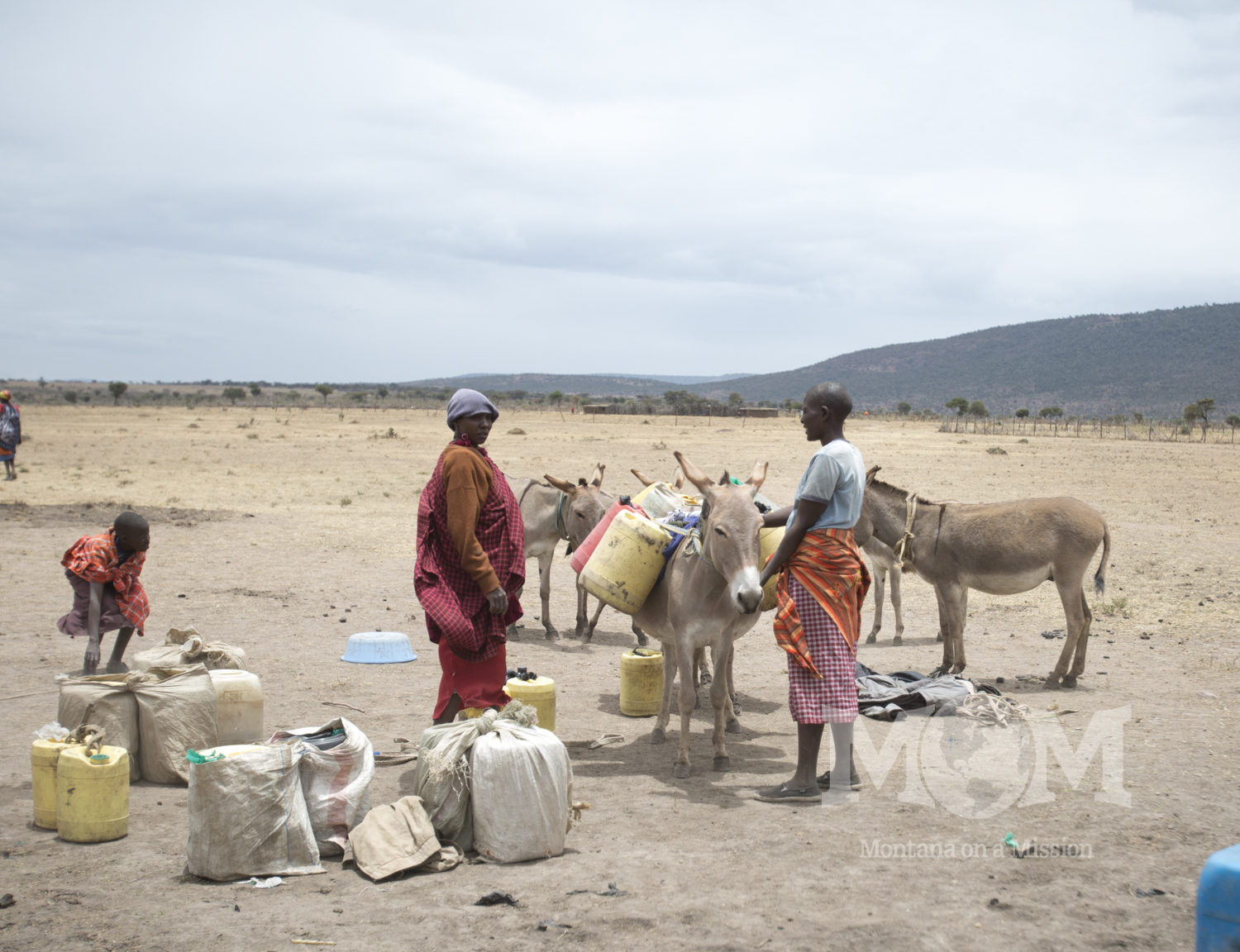One of the primary tasks of the day – and arguably the most important – falls to the women and girls of the Maasai household. The human body is approximately 65% water and a person can’t survive without water for more than a few days. For the Lukeine family that water comes from a spring located about 3km from their home or sometimes a river that is even further away. Seasonally many water sources dry up. In addition to being very hard work and consuming valuable hours each day the trip can also be dangerous and sometimes thwarted by wild animals.
Noomali gathers up the plastic jerry cans (a repurposed bright yellow plastic container that was originally used for cooking oil. These are then rinsed and sold as vessels for water storage) and a length of rope after she is finished milking the livestock and sharing a breakfast of Kenyan mixed tea with her family. She, her sister-in-law and her daughters (while on break from school) leave to fetch the day’s water. The family needs water for cooking, making tea, bathing and washing dishes. The Maasai drink very little water, as such. They take most of their fluids in the form of tea mixed with milk. They are used to having to be careful about the water they drink and usually just go without, waiting until their daily meals to quench their thirst with a cup of tea. You certainly don’t see people carrying around their Hydroflask and trying to maximize their daily water intake! The Maasai are used to living with digestive upset and not feeling their best due to symptoms from drinking from contaminated water sources.
Those who have made it to adulthood are lucky and have built some immunity to some of the microbes in the water they drink. But deadly Typhoid, E.Coli, parasites and other diseases lurk in the pools of water where they fill their jerry cans. In agricultural areas fertilizer and herbicide runoff is a real problem. In the developing world a child dies every 15 seconds from disease caused from unsafe drinking water. 1 Only half of the children survive beyond age five when they don’t have access to a protected clean water source.
Noomali and her sister-in-law walk along the well-beaten path kicking up dust with every step. It seems every year is drier than the last as the extended drought makes a hard life even more difficult. Springs in the area have dried up and many women must go even further in search of water. They arrive at the spring and put down the yellow plastic jugs (jerry cans) they use to collect water. There is a line of women each waiting for their turn to fill their jerry cans and begin the trek home.
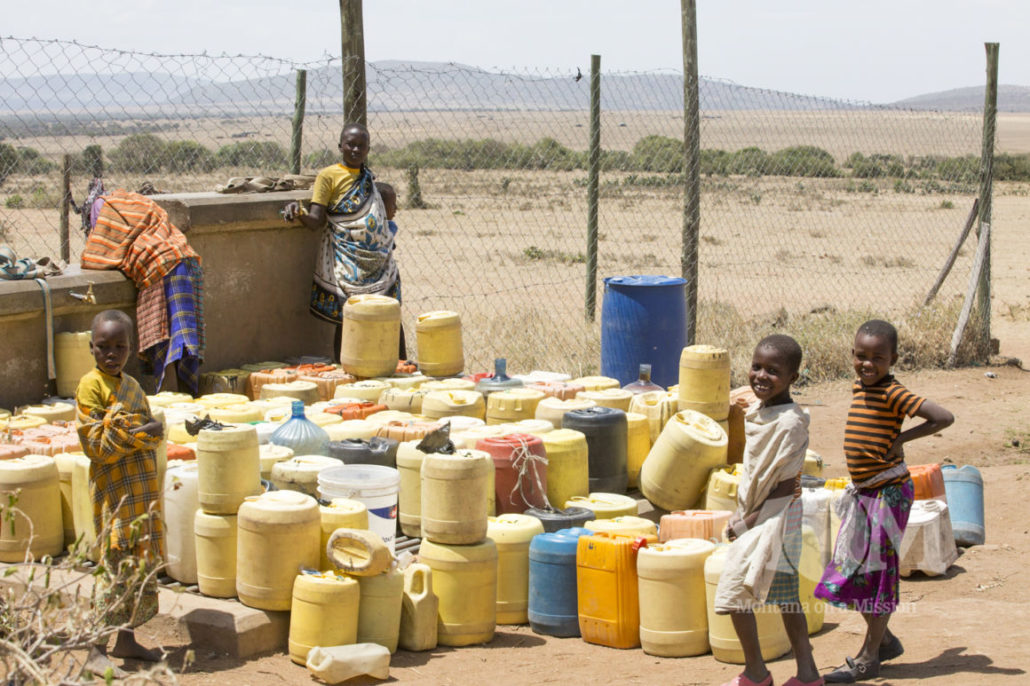
Women often have to walk long distances to collect water for their families and arrive to a crowded source and must wait in line for the chance to fill their jerry cans.
Once or twice a week the women also bring the family’s laundry with them to the spring and scrub the cotton garments until they are clean, then drape them on the ground or over a bush to dry. When it’s finally her turn, Noomali puts a little water into the jerry can, swirls it around and pours it out on the ground. She then fills her 20 Liter container, packs the opening with an old plastic bag to prevent spilling, adjusts the rope that encircles the jug and hoists the 40 pounds onto her back, placing the rope across the crown of her head to bear the brunt of her burden. Most ladies have a permanent groove in their skull from carrying the full jerry cans since they were young. Some families have donkeys to help carry the water. The donkeys usually carry on their backs four times what each woman can carry by herself. But a donkey is another mouth to feed and there is no surplus of vegetation in the Maasai Mara region.
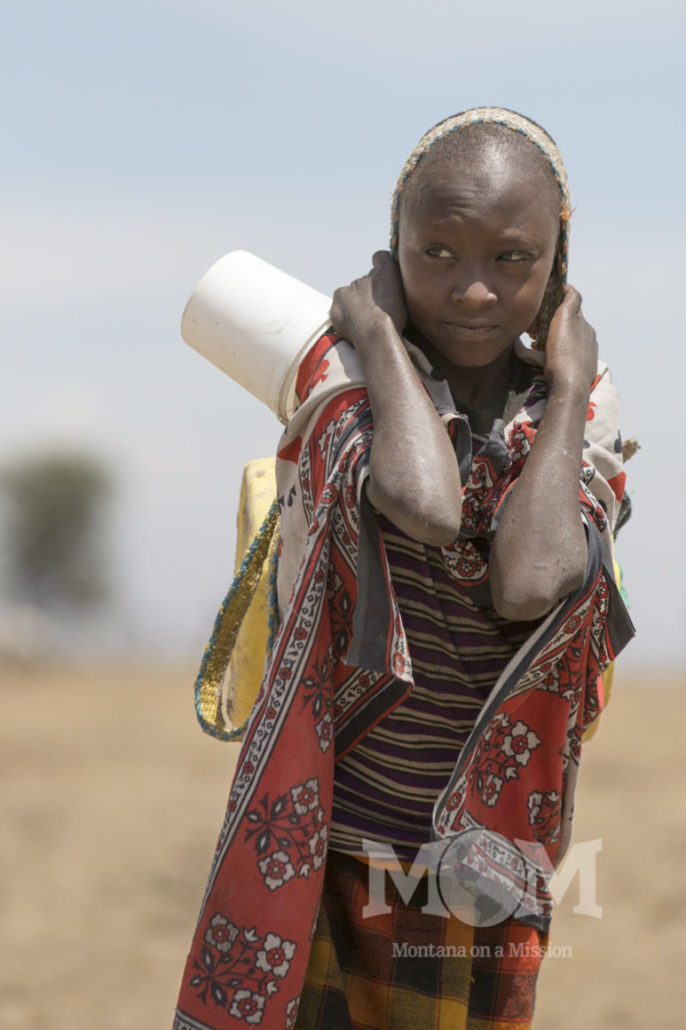
Children often follow their mothers along to help fetch water. Carrying smaller containers and learning how to balance the heavy loads.
It’s estimated that world-wide nearly one billion people have to walk to obtain water for use in their daily lives. The average distance of that walk is 6km (3.5 miles) each day.2 It’s bad enough to have to put in these miles to get clean water from a protected source but many people don’t have that option. The water they bring home is dirty and often is collected from a river or open pool, shared by livestock and wildlife. However, you and I have been given the opportunity to make a difference! Together we can partner with Noomali, her family and community to develop protected water sources that ensure the water she takes home nourishes rather than harms her family. Please consider joining with Montana on a Mission to make a huge difference in the lives of these families. Any donation, large or small, saves lives and improves the future for families like Noomali’s.
1 World Health Organization and United Nations Children’s Fund. (WHO and UNICEF). (2000). Global Water Supply and Sanitation
2 CNN.com/2011/HEALTH/04/29/drinking.water

